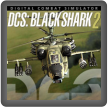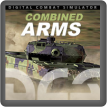Historia del AIM-120 y sus fechas de produccion
Escuela de Pilotos DCS World :: Comunidad de Pilotos Virtuales de Digital Combat Simulator :: Digital Combat Simulator
Página 1 de 1.
 Historia del AIM-120 y sus fechas de produccion
Historia del AIM-120 y sus fechas de produccion
En muchos lugares (no quiero decir donde ni ofender a otros), nos han dicho siempre que la simulacion del DCS corresponde a los años 80s e inicios de los 90s, pero viendo la historia real, los AIM-120B y C, no comenzaron a entregarse a las USAF y NAVY en EEUU hasta mediados de los 90s (1994), con lo cual nos han metido una guayaba tremenda DCS y demuestra como hemos dicho el favoritismo por el F-15, ahi les dejo el articulo y la fuente.
http://www.navy.mil/navydata/fact_display.asp?cid=2200&tid=100&ct=2
"AIM-120 ADVANCED MEDIUM-RANGE, AIR-TO-AIR MISSILE (AMRAAM)
Description
The AIM-120 Advanced Medium-Range, Air-to-Air missile is a new generation air-to-air missile. It has an all-weather, beyond-visual-range capability and is scheduled to be operational beyond 2020. The AMRAAM is being procured for the U.S. Navy, Air Force and allies of the United States. In addition to providing an air-to-air capability, AMRAAM also provides air defense support.
Features
The AMRAAM program improves the aerial combat capabilities of U.S. and allied aircraft to meet current and future threats of enemy air-to-air weapons. AMRAAM serves as a follow-on to the AIM-7 Sparrow missile series. The new missile is faster, smaller, and lighter, and has improved capabilities against low-altitude targets. The AIM-120 incorporates an active radar in conjunction with an inertial reference unit and microcomputer system, which makes the missile less dependent on the fire-control system of the launching aircraft. Once the missile closes in on the target, its active radar guides it to an intercept. AMRAAM-equipped fighters can attack several targets simultaneously. Deliveries of the AIM-120B version began in 1994 and ended in 1995. AIM-120C series began deliveries in 1996 and continue thru the present. Joint procurement of the AMRAAM continues with the AIM-120D version starting in fiscal 2006, which features improved navigation, kinematics, lethality and hardware and software updates to enhance its electronic protection capabilities against more capable threats.
Background
The AIM-120 grew out of a joint agreement, no longer in effect, between the United States and several NATO nations to develop air-to-air missiles and to share the production technology. AMRAAM has three variants - the AIM 120A/B/C are operational on U.S. Navy and Air Force aircraft.
Service
Navy and Air Force
Point Of Contact
Navy:
Program Executive Office, Strike Weapons and Unmanned Aviation [PEO (W)]
Public Affairs Office
Naval Air Station
Patuxent River, MD 20670-1547
(301) 757-7490
Air Force:
Air Combat Command
Public Affairs Office
115 Thompson St., Suite 211
Langley AFB, VA 23665-1987
(757) 764-5007
General Characteristics
Primary Function: Advanced, medium-range, air-to-air tactical missile
Contractor: Raytheon.
Date Deployed: September 1991.
Propulsion: Solid Propellant Rocket.
Length: 12 feet.
Diameter: 7 inches.
Wingspan: AIM-120A/B 21 inches; AIM-120C/D 19 inches.
Weight: AIM-120A/B/C-4 348 pounds; AIM-120C 5/6/7/D 356 pounds.
Speed: Classified
Platforms: Navy: F/A-18C/D/E/F Hornet and Super Hornet. Air Force: F-15, F-16 and F-22. NATO: AV-8B, Eurofighter 2000, F-1C, F-4, F-15, F-16, F/A-18, JAS-39.
Warhead: Blast Fragmentation; high explosive.
Last Update: 20 August 2014"
http://www.navy.mil/navydata/fact_display.asp?cid=2200&tid=100&ct=2
"AIM-120 ADVANCED MEDIUM-RANGE, AIR-TO-AIR MISSILE (AMRAAM)
Description
The AIM-120 Advanced Medium-Range, Air-to-Air missile is a new generation air-to-air missile. It has an all-weather, beyond-visual-range capability and is scheduled to be operational beyond 2020. The AMRAAM is being procured for the U.S. Navy, Air Force and allies of the United States. In addition to providing an air-to-air capability, AMRAAM also provides air defense support.
Features
The AMRAAM program improves the aerial combat capabilities of U.S. and allied aircraft to meet current and future threats of enemy air-to-air weapons. AMRAAM serves as a follow-on to the AIM-7 Sparrow missile series. The new missile is faster, smaller, and lighter, and has improved capabilities against low-altitude targets. The AIM-120 incorporates an active radar in conjunction with an inertial reference unit and microcomputer system, which makes the missile less dependent on the fire-control system of the launching aircraft. Once the missile closes in on the target, its active radar guides it to an intercept. AMRAAM-equipped fighters can attack several targets simultaneously. Deliveries of the AIM-120B version began in 1994 and ended in 1995. AIM-120C series began deliveries in 1996 and continue thru the present. Joint procurement of the AMRAAM continues with the AIM-120D version starting in fiscal 2006, which features improved navigation, kinematics, lethality and hardware and software updates to enhance its electronic protection capabilities against more capable threats.
Background
The AIM-120 grew out of a joint agreement, no longer in effect, between the United States and several NATO nations to develop air-to-air missiles and to share the production technology. AMRAAM has three variants - the AIM 120A/B/C are operational on U.S. Navy and Air Force aircraft.
Service
Navy and Air Force
Point Of Contact
Navy:
Program Executive Office, Strike Weapons and Unmanned Aviation [PEO (W)]
Public Affairs Office
Naval Air Station
Patuxent River, MD 20670-1547
(301) 757-7490
Air Force:
Air Combat Command
Public Affairs Office
115 Thompson St., Suite 211
Langley AFB, VA 23665-1987
(757) 764-5007
General Characteristics
Primary Function: Advanced, medium-range, air-to-air tactical missile
Contractor: Raytheon.
Date Deployed: September 1991.
Propulsion: Solid Propellant Rocket.
Length: 12 feet.
Diameter: 7 inches.
Wingspan: AIM-120A/B 21 inches; AIM-120C/D 19 inches.
Weight: AIM-120A/B/C-4 348 pounds; AIM-120C 5/6/7/D 356 pounds.
Speed: Classified
Platforms: Navy: F/A-18C/D/E/F Hornet and Super Hornet. Air Force: F-15, F-16 and F-22. NATO: AV-8B, Eurofighter 2000, F-1C, F-4, F-15, F-16, F/A-18, JAS-39.
Warhead: Blast Fragmentation; high explosive.
Last Update: 20 August 2014"

RUSH- Tom Cruise

- Mensajes : 563
Fecha de inscripción : 07/12/2013
Edad : 65
Localización : Cancun, Mexico
Escuela de Pilotos DCS World :: Comunidad de Pilotos Virtuales de Digital Combat Simulator :: Digital Combat Simulator
Página 1 de 1.
Permisos de este foro:
No puedes responder a temas en este foro.





